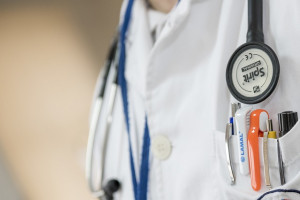
Evidence shows that early detection and treatment of cancer can significantly improve health outcomes, however women in Mississippi, particularly in underserved populations, experience the worst health outcomes for cervical, breast, and oropharyngeal cancer.
A new publication from Michelle Williams, associate professor at George Mason University's College of Health and Human Services Department of Global and Community Health, published in the Journal of Cancer Education evaluates the feasibility of offering free, same-day cancer screening and health education to reduce disparities of "preventable cancers."
Williams evaluated the effects of providing access to free mammograms, Pap tests and pelvic exams, and oral cancer exams on participants' knowledge about cancer, self-efficacy for obtaining healthcare, and intentions to change their health behaviours.
Williams and colleagues evaluated an implementation of the See, Test, & Treat Program, an evidence-based program developed by the College of American Pathologists (CAP) Foundation which they adapted for use with uninsured and underserved women in the Jacksonville Metropolitan Area.
See, Test, & Treat participants were educated about cancer screenings during their consultation with providers.
Important features of the See, Test, & Treat program were that participants received screening results within 2 hours and participants who received abnormal results were able to schedule a follow-up appointment at a Federally Qualified Health Center (FQHC) before leaving.
In addition, upon arriving at the screening site waiting room, participants could choose from a variety of health activities, including demonstrations of healthy cooking, yoga, and Zumba.
"Cancer screenings are a valuable tool for the early detection of cancer - however uninsured and underserved women may lack access to life-saving routine screenings.
Evaluating the implementation of this program helps show that it is feasible to provide access to free cancer screenings to vulnerable populations and to provide screening results in the same day," said Williams.
The majority of participants reported that they attended the See, Test, & Treat Program because they wanted free cancer screening and they could get the test results back the same day.
The majority of participants reported that the program had a positive effect on their knowledge of cancer screenings and their self-efficacy for seeking regular check-ups.
In addition, participants reported that the health education activities had a significant effect on their understanding of the cancers for which they screened as well as health, nutrition, and exercise.
Follow-up appointments were made for all participants who received abnormal test results, including 18 women who received abnormal mammogram results. 15 of the 18 women obtained a diagnostic mammogram, three of whom required biopsies.
All the biopsy results were benign. Two of the women who received the oral cancer exams had abnormal results and both were referred for treatment. None of the 44 Pap tested were abnormal, however 14 women were diagnosed with trichomonas and referred for treatment.
Overall, the program was positively received by the participants and successfully provided uninsured and under-served women with free cancer screening and health education.
When asked about what they enjoyed most about the program, participants identified the convenience of same day screening results and that the staff treated them with respect. One participant reported that the staff "didn't make me feel like someone who didn't have health insurance."
Limitations of the evaluation approach include the lack of long-term follow-up because the evaluation survey was completed anonymously. William seeks to include an interview and follow-up survey of all participants in future iterations of the program.
Participants learned of the program through advertising disseminated through channels such as churches, healthcare centres, and social media.
Childcare was made available for participants with young children. The American Cancer Society guidelines were used to determine eligibility for the breast and cancer screening.
72 women met the eligibility requirements, 53 women were screened, and 52 participants completed the evaluation survey.
Source: George Mason University
The World Cancer Declaration recognises that to make major reductions in premature deaths, innovative education and training opportunities for healthcare workers in all disciplines of cancer control need to improve significantly.
ecancer plays a critical part in improving access to education for medical professionals.
Every day we help doctors, nurses, patients and their advocates to further their knowledge and improve the quality of care. Please make a donation to support our ongoing work.
Thank you for your support.